Safeguarding Your Business: A Deep Dive into Fraud Prevention and Detection
How can you strengthen fraud prevention and detection for your business?
All kinds of companies deal seriously with fraud. Small firms are particularly vulnerable since they can have little resources and do not have the same degree of internal control as bigger companies.
According to the Association of Certified Fraud Examiners (ACFE), fraud claims annually cost companies around 5% of their income. That's a lot of money, and for a tiny firm, it may be disastrous.
Fortunately, though, there is news. Acting proactively will lower your chance of fraud. With the help of accounting and tax services for small business, you can strengthen internal controls, ensure financial transparency, and reduce the risk of fraudulent activities.
Let’s look at some sensible methods of fraud protection and detection that would safeguard your company.
Understanding Fraud and Its Impact
Let us first define fraud and the many effects it may have on your company before we explore prevention and detection. Any deliberate act of dishonesty meant to bring about financial advantage is fraud. It may show up as:
- Asset misappropriation is the theft or use of corporate assets—such as cash, inventory, or machinery.
- Financial statement fraud: This involves the intentional misrepresentation of financial information, such as overstating revenue or understating expenses.
- Corruption: This involves using one's position for personal gain, such as accepting bribes or kickbacks.
Fraud can have a devastating impact on a business, both financially and reputationally. It can lead to:
- Financial losses: This is the most direct impact of fraud. Businesses can lose significant amounts of money due to fraudulent activities.
- Reputational damage: Fraud can damage a business's reputation, making it difficult to attract customers and investors.
- Legal problems: Businesses found to have engaged in fraud can face legal penalties.
- Employee morale problems: Fraud can create a sense of mistrust and insecurity among employees.
Now that we understand the gravity of fraud let us explore how you can protect your business.
Proactive Measures: Prevention is Key
Preventive measures are the first line of defence against fraud. Strong internal controls serve to significantly lower the possibility of fraud beginning within. These are some basic preventive steps:
- Segregation of duties: This involves dividing financial responsibilities among employees to reduce the risk of one person having too much control. For example, the person who writes checks should not also be the person who reconciles the bank account.
- Strong authorization policies: Establish clear procedures for approving transactions and ensure that the appropriate personnel properly authorizes all transactions.
- Regular inventory counts: Regular physical inventory counts can help identify discrepancies or missing items.
- Background checks: Conducting background checks on potential employees can help to identify individuals with a history of fraud.
- Data monitoring and access controls: Implement measures to track employee access to sensitive data and monitor for unusual activity.
Early Detection: Spotting the Red Flags
Even with the finest preventative measures in place, fraud can still happen. That is why early detection technologies for fraud are critical. Here are several red signs that could indicate fraud:
- Unexplained changes in financial performance: Unanticipated or sudden changes in financial performance—such as a notable decline in income or a rise in expenses—may point to fraud.
- Employee lifestyle changes: If an employee suddenly starts living beyond their means, it could be a red flag that they are misappropriating company funds.
- Unusual accounting entries: Look for unusual or suspicious accounting entries, such as entries made outside of regular business hours or entries that lack proper documentation.
- Employee complaints: If employees complain about unethical behaviour or suspicious activity, it's essential to take these complaints seriously and investigate them thoroughly.
Tips for Strengthening Your Fraud Prevention and Detection Efforts
- Create a culture of honesty and ethics: Promote a strong ethical culture within your organization and clarify that fraud will not be tolerated.
- Implement a whistleblower hotline: Provide a confidential way for employees to report suspected fraud.
- Regularly review your internal controls: Make sure your internal controls are up-to-date and effective. Partnering with accounting & tax services can help ensure your financial processes are robust and secure.
- Use data analytics: Data analytics can be a powerful tool for detecting fraud. Consider using software that can help you identify patterns and anomalies in your financial data, often in collaboration with accounting & tax services to enhance accuracy.
- Educate your employees: Train your employees on fraud prevention and detection. Make sure they understand the red flags to watch out for and how to report suspected fraud.
Uncommon Information: The Fraud Triangle
Have you heard of the Fraud Triangle? This model, developed by criminologist Donald Cressey, explains the factors contributing to fraudulent behaviour. The three sides of the triangle are:
- Opportunity: This refers to the situation that allows fraud to occur, such as weak internal controls or lack of oversight.
- Pressure: This refers to the financial or personal pressure that motivates someone to commit fraud, such as debt or addiction.
- Rationalization: refers to the justification the individual uses to excuse their behavior, such as "I'm only borrowing the money" or "the company owes me this."
Understanding the Fraud Triangle can help you to identify and address the root causes of fraud in your organization.
Questions to Consider
- Do you have a fraud prevention policy in place?
- Have you conducted a fraud risk assessment?
- Do you have adequate insurance coverage in case of fraud?
- Do you provide regular fraud awareness training to your employees?
Approaching fraud prevention and detection from the front end will lower your risk. Remember that defending your company from fraud is a continuous process. It calls for awareness, dedication, and a readiness to change with the times and meet fresh hazards.





